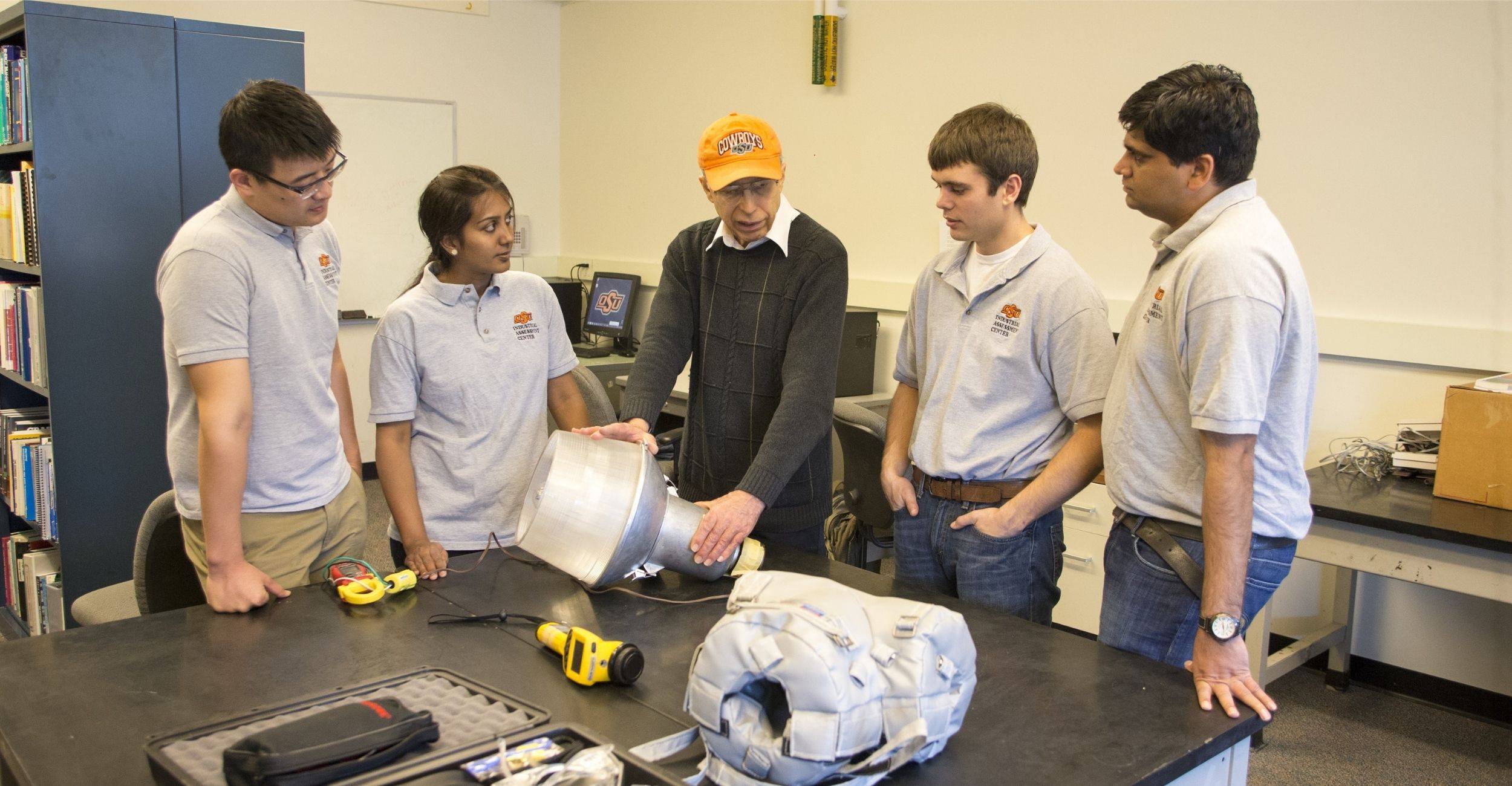
Industrial Assessment Center saves Oklahomans millions in energy costs
Wednesday, April 21, 2021
Media Contact: Lyn Putnam | Communications Specialist | 405-744-5496 | lyn.putnam@okstate.edu
Dr. Hitesh Vora was auditing a factory in rural Oklahoma when he noticed something strange.
An outdoor boiler had an oddly placed pipe billowing thick steam directly out the side. When he and his team asked employees what it was, they were not sure either.
“An exhaust pipe?” They guessed.
When the audit came back, they found the worst possible result: the pipe was not only non-functional and letting out an unbelievable amount of heat, it was also causing an eye-popping tens of thousands of dollars in energy waste per year as the boiler worked overtime trying to maintain its temperature. Although it cost only $400 to fix, it had been neglected for years.
Since it was founded in 1982, the Oklahoma State University Industrial Assessment Center (OSU IAC) has saved Oklahoman businesses an estimated $308 million in energy costs. It is a part of the IAC program funded by the US Department of Energy, which aims to cut down on excessive energy usage by offering businesses and factories completely free assessments of their energy efficiency. The assessments provide recommendations on equipment, energy usage, water management and more. They also help both the companies and Oklahomans by reducing demand for energy.
“We are not a one-man team,” Director of OSU Industrial Assessment Center Dr. Hitesh Vora said. “It’s only through the hard work of our team for decades that we have managed to reach such high energy savings.”
OSU IAC has been particularly effective and efficient, becoming the first Industrial Assessment Center in the nation to reach 1,000 assessments in 2018. Its employees have been key to OSU’s efforts to create a more sustainable and energy-efficient Oklahoma. A large part of the Times Higher Education’s ranking of OSU as sixth in the United States out of all other universities for the categories of ‘Affordable and Clean Energy’ and ‘Sustainable Cities and Communities’ can be attributed to the work of OSU IAC.
Most of the savings OSU IAC fights for fall into five categories: energy savings, water savings, waste savings, productivity gains and a reduction of greenhouse gas emissions.
An assessment begins with 12 months of billing statements, which IAC staff examine for unexpectedly high costs or expenditure. Then, a small team of students and faculty examines the facility, making notes on any inefficiencies or wasteful design. Sometimes, bringing down costs can be difficult, requiring newer and more efficient machines to replace old air compressors and forklifts. Other times, bringing down costs can be as simple as putting strip curtains over the doorways in an air-conditioned warehouse, to prevent the considerable amount of cool air escaping through the gaps.
“One facility we helped had simply been paying the wrong utility rate for five years,” Vora said. “But it’s not usually that easy.”
OSU IAC does not only work with manufacturers. All water and wastewater treatment plants are eligible to receive a free assessment as well. Often city budgets are too strained to pay for energy-saving assessments, and wastewater treatment assessments understandably tend to not be a favorite of private contractors.
“They always have a hard time finding people [to assess their energy usage] and their budgets always go to other places first,” Vora said. “So, we help them for free.”
In 2020, the staff of OSU IAC received additional funding from a US Department of Agriculture grant to build the Rural Energy Assessment Center at OSU, which has allowed them to partner with smaller food producers and small businesses. Whereas OSU IAC is forced to exclude businesses that are too small, the REAC can help much smaller companies bring down their energy costs.
“We’ve been able to reach out to and serve far more small and rural businesses that we previously would’ve had to turn away,” Vora said.
The OSU Industrial Assessment Center has shown how a dedicated group of people working continually to make small changes can end up making a gigantic difference. Thanks to the OSU IAC’s efforts over the past 39 years, energy waste has been brought significantly down, and Oklahomans are more than $300 million richer.
Story by Zach Kluver
